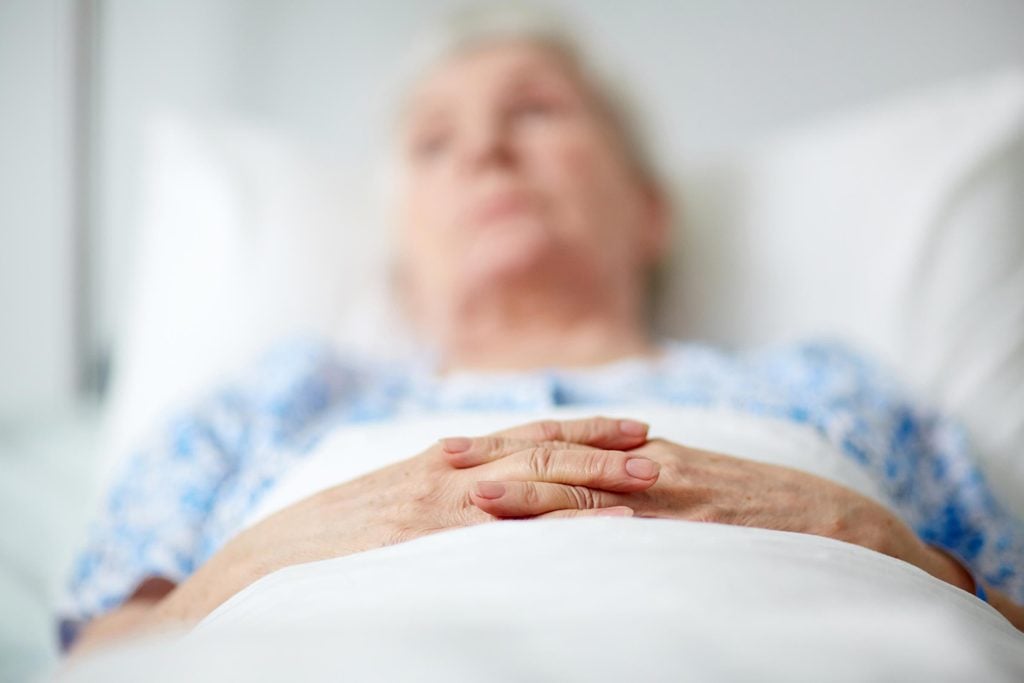Bed Sores: 8 Things Caregivers Should Absolutely Know
Updated: Jan. 12, 2017
Caregivers have a lot to worry about, but one thing that should stay on top of their list is bedsores. Bedsores (or pressure injuries) that aren't properly prevented or treated are responsible for 60,000 deaths each year, and per a recent report, that number is growing at an alarming rate: a 63 percent increase in the past decade alone. Here's what every caregiver should know about them.

First, what are bedsores?
“Bedsores, decubitus or pressure ulcers, begin as inflammation of the skin from prolonged position, which has prevented normal circulation to that localized area of pressure,” explains Jerisa Berry, DO, board-certified in emergency medicine in Palm Beach County Florida, co-owner of medical clinic, Vital Care Medical Center, Inc. in Greenacres, Florida, and owner of Home Health Agency, Home Helpers of Palm Beach. “The longer the person’s skin remains under pressure to that area, the skin sloughs off because it essentially dies from poor circulation. They begin as reddened areas, which serves as the initial warning to initiate therapy, both physical care and topical creams.”
How are bedsores prevented?
Bardia Anvar, MD, medical director of Skilled Wound Care with offices in Los Angeles and Dallas, says elderly patients and those who have suffered paralysis or stroke are particularly vulnerable as are those with immobility since they have difficulty sensing pressure and cannot turn away from the pressure area. “Keep the body off from areas of pressure, especially while in bed,” recommends Dr. Anvar. “One key prevention method is to seek out specialty mattresses like those with foam padding, and make sure that there is extra padding on chairs and wheelchairs. It is also important for the person to maintain healthy diets with adequate protein and carbohydrates and multi-vitamins to supplement their nutritional intake.”
Why are bedsores dangerous?
According to Dr. Anvar, approximately 60,000 patients die each year from pressure injuries related to a life-threatening infection called sepsis. “Very dangerous microorganisms can gain access to the blood stream from a pressure wound. Patients can also suffer some severe deformities from these wounds such as amputations of limbs and huge defects in the body after healing,” adds Dr. Anvar. “Pressure also can limit mobility, cause severe pain, and can be very foul smelling and embarrassing for patients.”
How are bedsores treated?
If a bedsore is clean and not infected, it is treated with daily dressing changes and complete offloading from the area of injury, he says. “If the wound is infected or dying tissue (known as necrosis) is detected, then it must be treated with surgical debridement, which is a rapid method of removal (using chemical agents may take longer). Once the wounds are clean, there are multiple wound dressings on the market that facilitate healing,” Dr. Anvar states.
How can home caregivers be vigilant about preventing bedsores?
As an owner of a home health agency, Dr. Berry encourages caregivers to fully assess the backside and buttocks of bed-bound patients at every shift, taking note if there has been any change or new redness of that area. “They must also document their findings of the examination, as well as take photos of the initial deterioration. Photos are taken on a regular basis to note if there has been any improvement or worsening,” she says.
What are some skin-care recommendations to reduce risk of bedsores?
Dr. Anvar recommends to limit baths to no more than three times per week for no longer than five minutes. Keep water temperature lukewarm and add bath oil. He also advises not use washcloths as they can break down the skin. After the bath, he advises not to not towel dry using swift motions. “Instead, softly pat dry and apply moisturizer immediately after bathing and reapply four times each day, ” adds Dr. Anvar.
Be mindful of everyday risks
In addition to bathing, Dr. Anvar says other risks for bedsores exist that caregivers should be aware of. “Improper lifting and turning are two of the most common causes of skin tears, which lead to pressure injuries. You can avoid them by using sheets to help shift the body’s position,” he adds. Furthermore, he states skin-on-skin contact also leaves one vulnerable to tears. “Making sure the elderly or infirmed person wears long sleeves and stockings can reduce such incidents,” Dr. Anvar says.
How to respond to a bedsore wound
If a wound does develop, do not use hydrogen peroxide or Dakin’s Solution as these products kill healthy tissue and impede the healing process. Instead, Dr. Anvar says to use normal saline to clean wounds, measure wounds weekly to track progress, use proper recommended dressings, and check wounds daily. “Make sure wounds are not covered with stool or moisture,” he continues. “Make sure that patients are regularly eating nutritionally sound meals. Also, limit their stationary time—whether in lying in bed or sitting in a chair/wheelchair—to 30 minute intervals.”
When to seek medical attention for bedsores
Caregivers and home health care providers need to be mindful of noticing any changes. “Upon initial diagnosis, pictures should be taken. It is important to notify the agency nurse when the bedsore or ulcer has worsened,” says Dr. Berry. “At that time, the nurse can order appropriate wound care consultation with the wound care department of affiliated hospital. Most bedsores can be managed outpatient, including wound care consulting. However, when a person develops fever or the bedsore develops an odor, the caregiver should notify the nurse as the patient might have worsened to the point of requiring hospital evaluation in the emergency department.”
